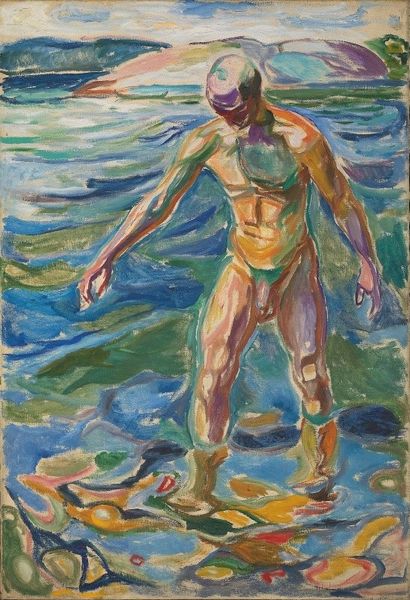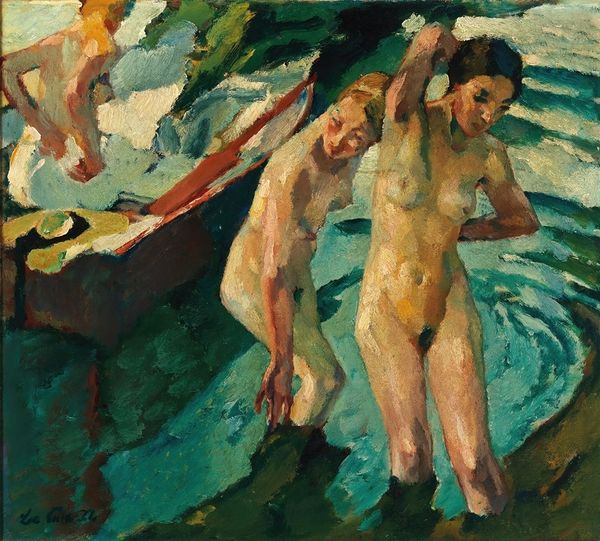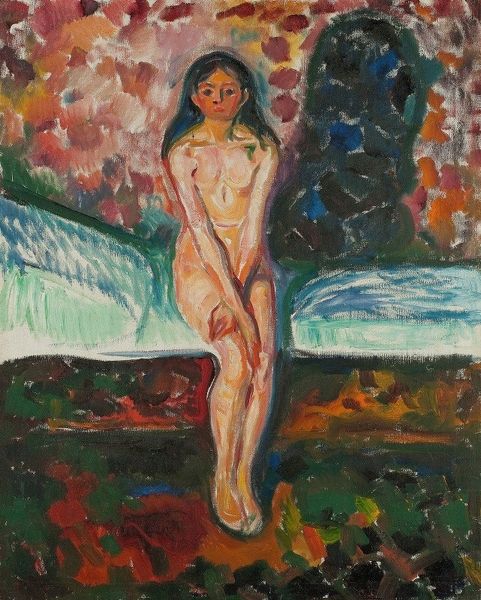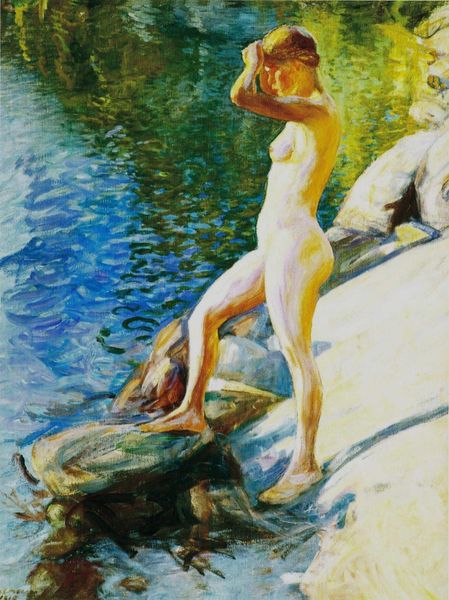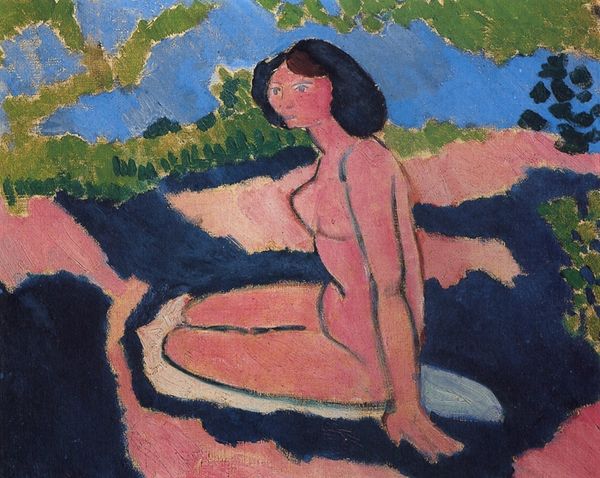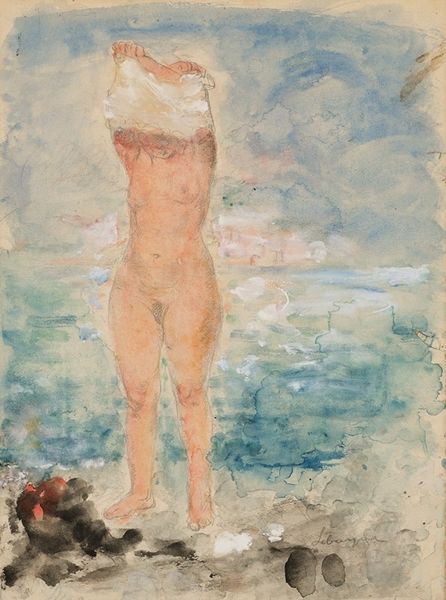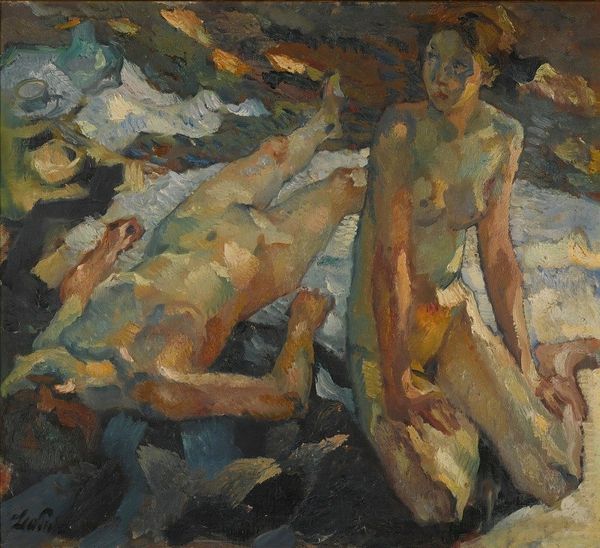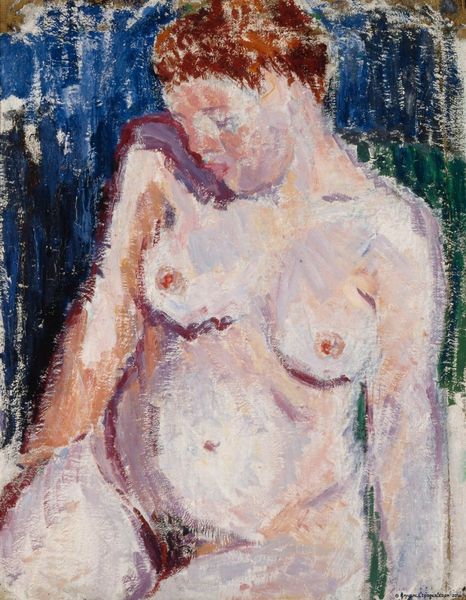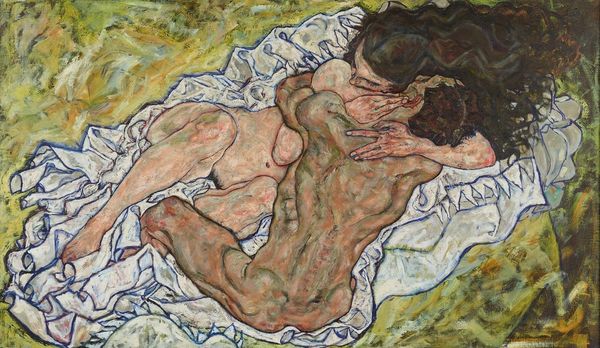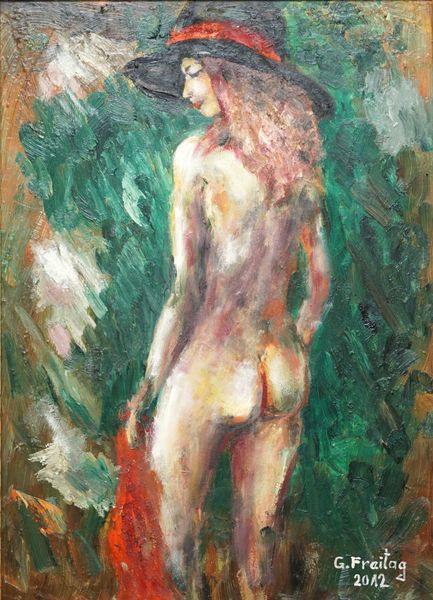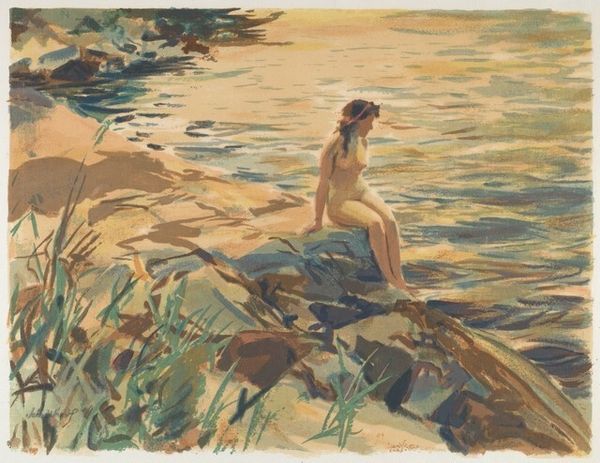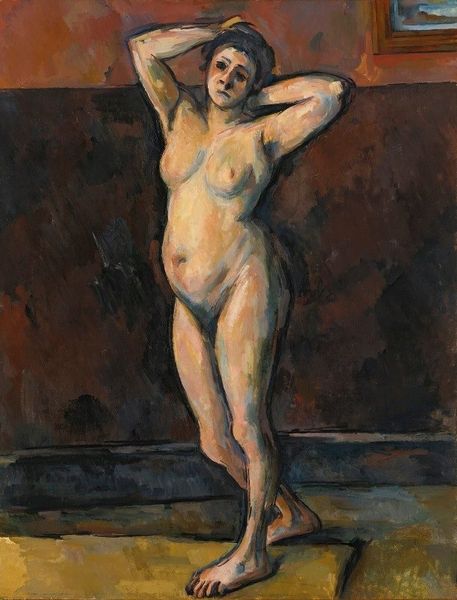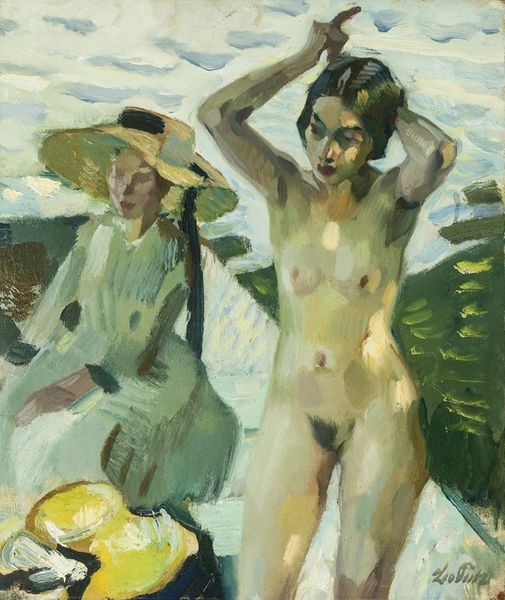
Copyright: Public Domain: Artvee
Editor: This is "Bathing, Standing Female Nude" by Leo Putz, painted in 1914, and it's oil on canvas. I’m immediately struck by the forceful brushstrokes and the slightly unsettling colors. How do you interpret this work, especially considering the time it was created? Curator: The Expressionist brushstrokes and unconventional color choices definitely give it an edge. But consider this: painted just before the outbreak of WWI, doesn't this female figure in nature seem to yearn for a sort of primordial innocence, a retreat from the growing tensions of a society heading toward self-destruction? Look at how her downward gaze seems to turn inward, shutting out the outside world. Do you see it too? Editor: That’s a really interesting perspective. I hadn’t thought about the context of the war. I was more focused on the Fauvist elements and the bold color choices of the water, which doesn’t feel like a peaceful scene at all. It is turbulent, even a bit threatening. Curator: Exactly! So maybe the ‘innocence’ is disrupted. Maybe the work hints at how idealized escapes always carry with them undercurrents of social anxiety. The female nude had long been used to symbolize purity and natural harmony, but here, Putz uses the figure to challenge that convention. It is a renegotiation of traditional artistic practices. Don’t you think? Editor: I see what you mean. The historical context gives it so much more depth. I thought it was just a style choice, but the war gives new significance. Curator: These vibrant colors in his earlier works may show influence of Impressionism or even hints of pointilism. As you explore how these colors appear in the final iteration of the work you may develop a different point of view. Considering historical circumstances in relation to a figure as common as a "nude", the Expressionist and Fauvist features almost symbolize a cry for peace against looming industrial warfare. We’re not simply looking at the image, but at what it meant to be looking at that image at the time. Editor: That completely changed my perspective on the piece! I appreciate it on an entirely new level now.
Comments
No comments
Be the first to comment and join the conversation on the ultimate creative platform.
